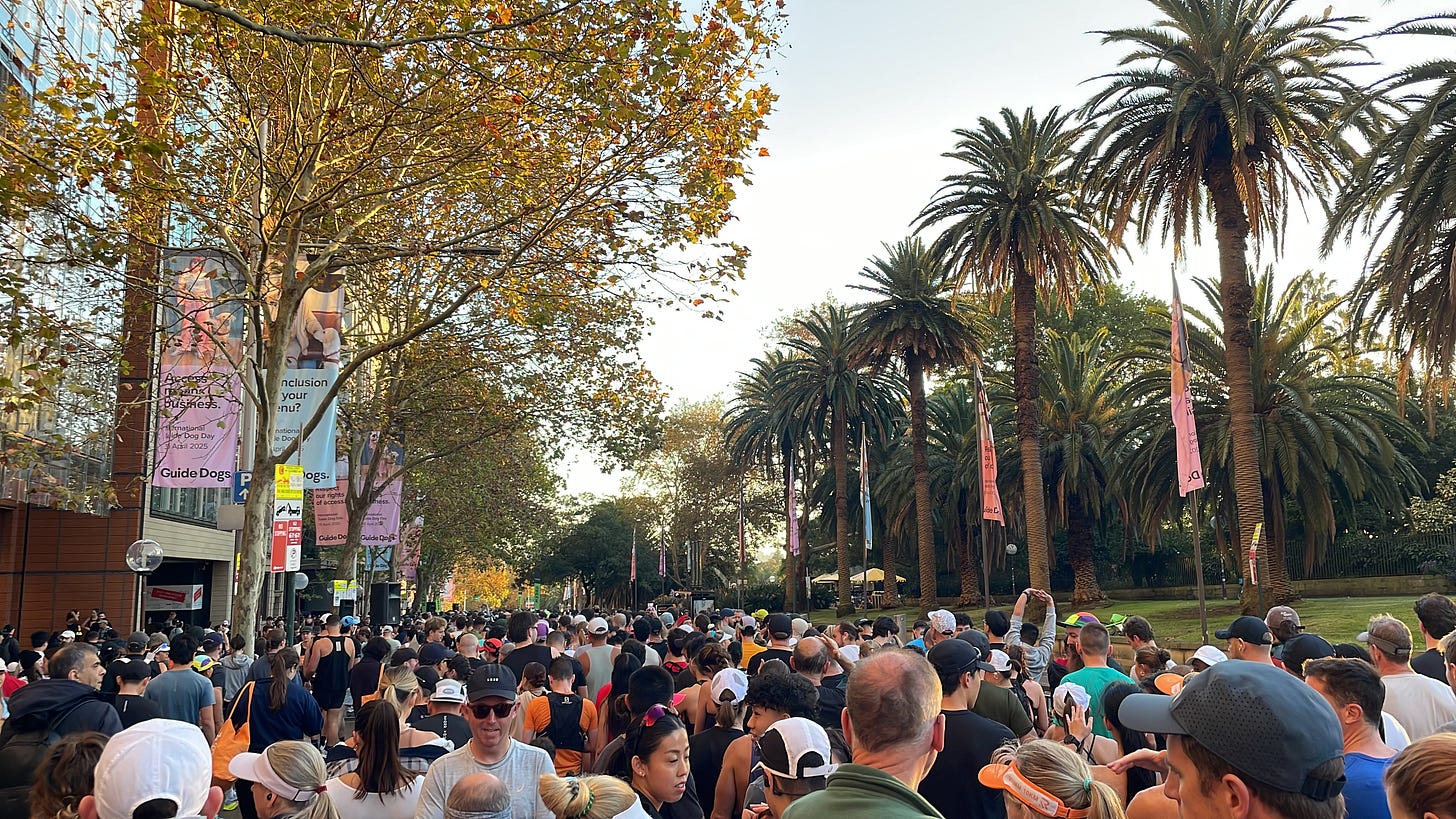Why do we find it so hard to embrace unorganised sport?
A recent event hosted by the Committee for Sydney shone a light on the importance of unorganised sport and the challenges of facilitating it in an environment where what matters gets measured.
A recent Committee for Sydney event, hosted by KPMG, discussed the future of sport in the city. The event was attended by a range of industry professionals including architects, town planners, coaches, local government officers and state sporting bodies.
The discussion was broad and far reaching covering a range of topics pertinent to how sport is provisioned and viewed in the coming decades including participation, facility availability, hosting major events and place making.
In the next series of Clubland articles I will summarise the main themes arising from the session, which could apply to Southampton, Seattle or Sarajevo as easily as they could to Sydney. The first in the series is un-organised sport.
Un-organised sport
Everything comes back into fashion if you wait long enough. Sport, for decades, has thrived on the ability of communities to come together and form spontaneous games. The rules are fluid, based loosely on the game they have watched on the TV but with their own nuance to ensure the competition is fair and evenly matched. At school, there were boys in the playground who were only allowed to score with their weaker foot (I haven’t got a weaker foot, they would protest), such was their prowess with the round ball. Friends and Enemies replaced Rugby to avoid painful abrasions after being tackled onto the gravel playground on days we were not allowed on the grass (often because of the presence of a burnt out car, I kid you not).
The tradition of un-organised sport has faded. Informal games at the park have been replaced by organised leagues, competitions, and often, costly registrations. Children now only practice when their team or squad practice which has heralded a gradual decline in athleticism among young people. It is not hard to find coaches who lament a lack of basic skills in areas such as kicking, catching, throwing, and running mechanics among young athletes. Scheduled sport, it seems, has replaced ad hoc and informal engagement. There may be factors that explain this trend, such as the perception that streets and roads are no longer safe, combined with less accessible green space. The latter was recognised by the NSW government in Australia when access to green space within 10 minutes of home became a Premier’s priority.
The rise of organised sport was a response to changing government priorities and a focus on sport as a vehicle for national pride through success on the world stage. Sports responded and became more ‘professional’ in their approach. As organisations improved their high-performance systems to support professional athletes and those competing in major events like the Olympics, there was a trickle-down effect which impacted community sport. To satisfy the key performance indicators, largely medals, sport prioritised organised sport as it could be controlled and co-ordinated to deliver the best possible outcome. Training was structured by coaches to achieve the intended goal rather than arranged in an ad-hoc manner by the athletes, often at the expense of fun and enjoyment. Cue talent squads, development squads, talent identification and selection initiatives. The mantra of ‘success’ was pervasive and (the collective) we forgot that most people engage in sport for its social benefits rather than to attend the Olympic games.
Government priorities, however, change over time. Key performance indicators with a focus on success at major events have been replaced by a drive to increase participation, protect athlete wellbeing, and foster inclusivity. The central funding that sport receives is linked to these outcomes and what matters gets measured. Sporting organisations have responded and turned their attention to growing participation across the various communities that make up their member base.
What sports are realising however, is that informal and social formats of their code are what is required to grow participation and meet the new criteria placed on them by government. The number of people who want to consume sport in an organised and competitive format, whilst useful in the pursuit of medals, is unlikely to support growth in participation. Organised sport may work for younger children but becomes gradually less popular in the teenage years and throughout adulthood. By the time we reach our 30s (I can just about recall that decade) most people have stopped participating in sport or if they do, it is via an unorganised and often solo format. They run, swim, cycle, walk, or go to the gym.
The growth in individual and self-organising pursuits is great for some governing bodies. Athletics can point to the rise in social running clubs or Park Run to show participation in their sport is as strong as ever. Similarly, cycling can attest to its popularity using the various lycra clad pelotons we see traversing roads on a Sunday morning whilst swimming may point to the various open water groups such as the Bold and the Beautiful (who meet every morning to swim from Manly to Shelly beach, and back again) or Swim Liverpool to reflect the popularity of their sport. It matters not that these participants don’t register with the sport formally, use a velodrome or step foot in an aquatic centre. The fact that they are taking part and doing so in a discernible and visible way is reason enough for these sports to make an argument for continued funding.
Quantifying informal participation poses a bigger challenge for other sports, especially those contested in team formats. Think Rugby, Cricket, and Baseball, or those that require expensive and specialised equipment and or facilities like Gymnastics, Tennis and Squash. These codes have responded by designing formats that are more social in nature, hosted locally, utilise non-bespoke facilities and are shorter in duration than traditional versions of the sport.
Cricket NSW established the twilight league, a short format version of the sport for women and girls with a focus on fun and social connectedness. This initiative has the benefit of being short so it fits into otherwise busy schedules, is played in the evenings when there are less familial pressures (rather than weekends), local so to limit travel time and non-competitive. Other sports have experimented with similar initiatives. Touch football is a more social and informal alternative to Rugby whilst Baseball 5s which can be played on rectangular fields rather than a diamond (which are in short supply, just ask Leonardo DiCaprio). These are as close to unorganised sport that sporting organisations can deliver whilst maintaining the need for participants to register. The registration is important because it allows the organiser to include them in their participation statistics. Despite the informal environment created for participants however, sporting organisations still require staff to administer these initiatives, fields need to be booked, floodlights turned on and court markings laid out. Whether this model is sustainable or the best method of facilitating unorganised sport is open for debate.
What if this were not the case? What if sport could find a way to capture the informal activity that happens in their code without the need for expensive administrative and facility costs. There is no shortage of urban basketball courts, football fields or AFL sticks which accommodate informal games by people of all ages. I have spent hours with my children practising shooting on the Netball courts at Reub Hudson, kicking goals at James Morgan reserve, playing back yard Cricket and games of Football (Soccer) at Alan Border Oval. These activities likely constitute a significant amount of participation in the codes that is being missed yet using technology, could be captured, and used to good effect.
Every time I go for a run, swim, or attend the gym I track this activity using my watch. At the end of the year it (and I) knows exactly how much activity in the different disciplines I have undertaken. If sports were able to work with technology companies to capture this information in a reliable format, they may find participation rates increase exponentially. Some may argue that there is too much scope for mis-reporting activity when technology is relied upon however this misses the inherent methodological challenges of measuring actual participation using current approaches employed by sporting organisations and researchers.
The added advantage of a move away from formal participation statistics and the need to register for unorganised sport is that it allows communities to fill the void. Groups who form organically to provide opportunities for people of all ages to participate in the most informal versions of sport provide benefits that go beyond those associated with being physically active. At a time when there is a general sense that the communities are becoming more disparate and divided, sport can act as a vehicle to bring people back together. It is hard to abuse a referee when there isn’t one and participants are required to call their own fouls and rule infringements. If you don’t believe this can happen, just look at sports like skateboarding, cliff jumping, surfing, and parkour, or online gaming communities where people self-organise into groups to play against each other. They are all characterised by informal participation underpinned by people from across the age and cultural spectrum coming together and forming communities.
Whether we choose to acknowledge it or not, informal and un-organised sport is happening all around us. These formats remain a cornerstone of how children first engage with sport and how adults remain physically active long after their desire (or ability) to be competitive has passed. Informal and un-organised sport is best provisioned by communities, providing a much-needed vehicle for people of all ages and backgrounds to come together and participate in a welcoming and fun environment.



